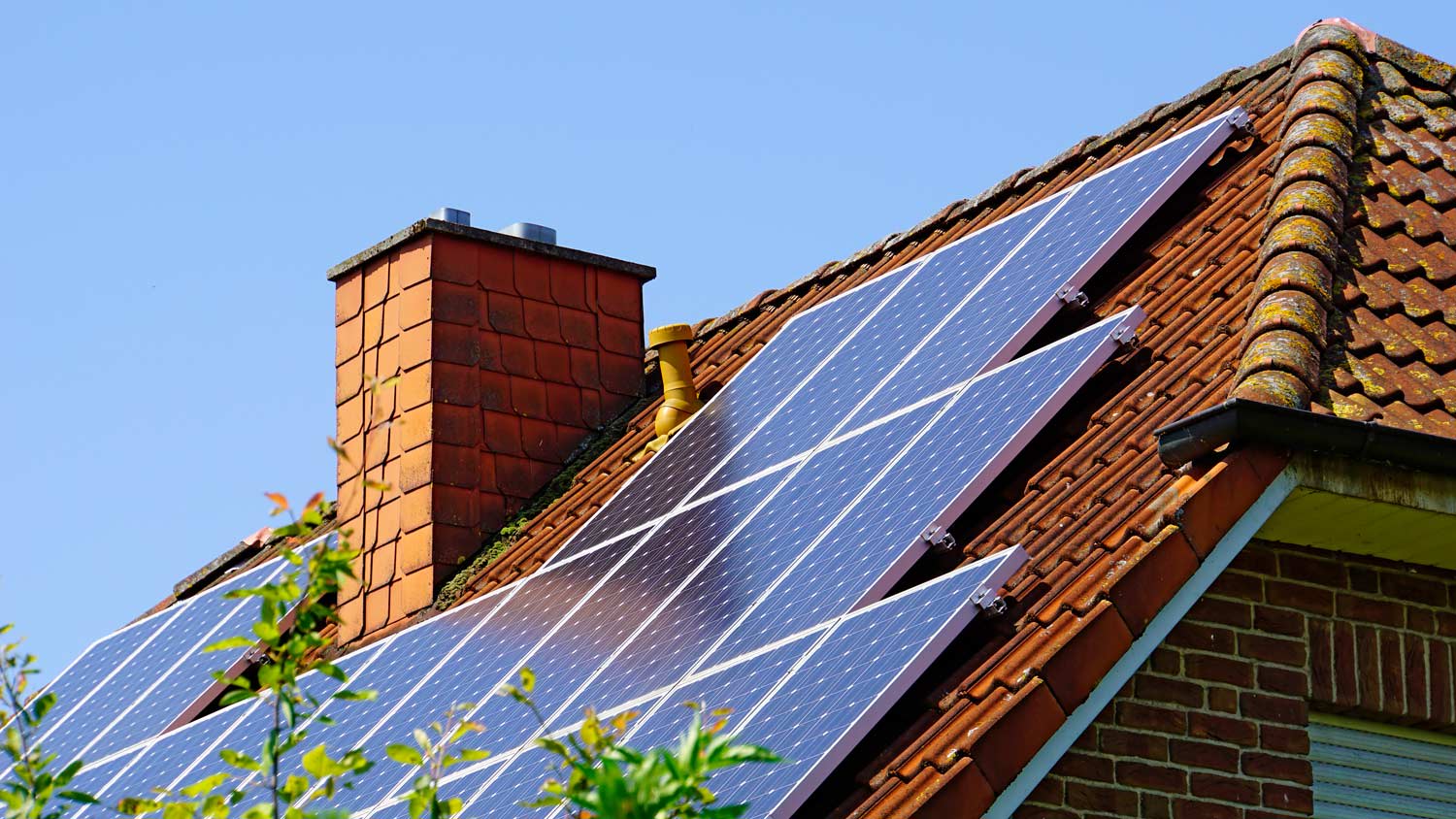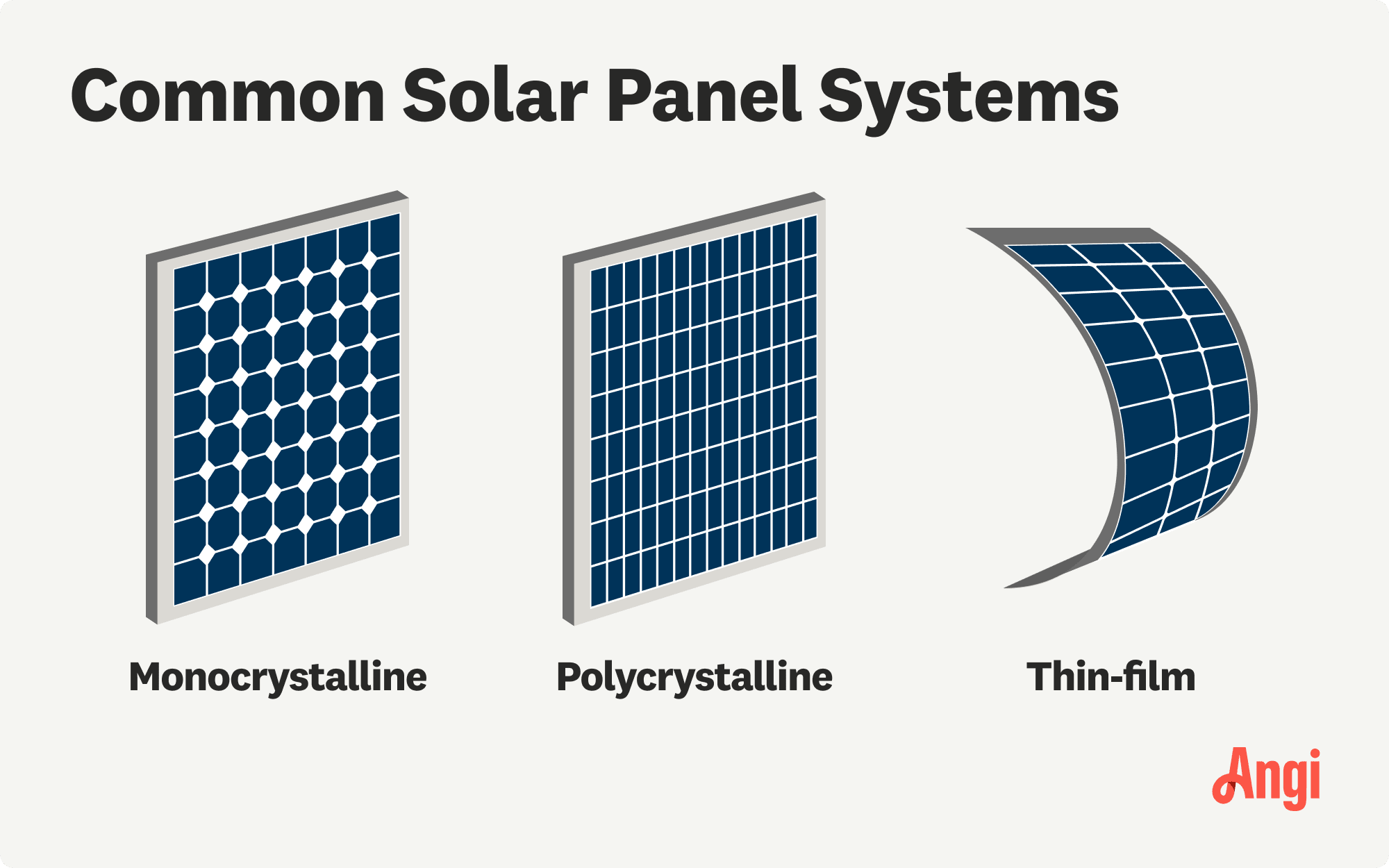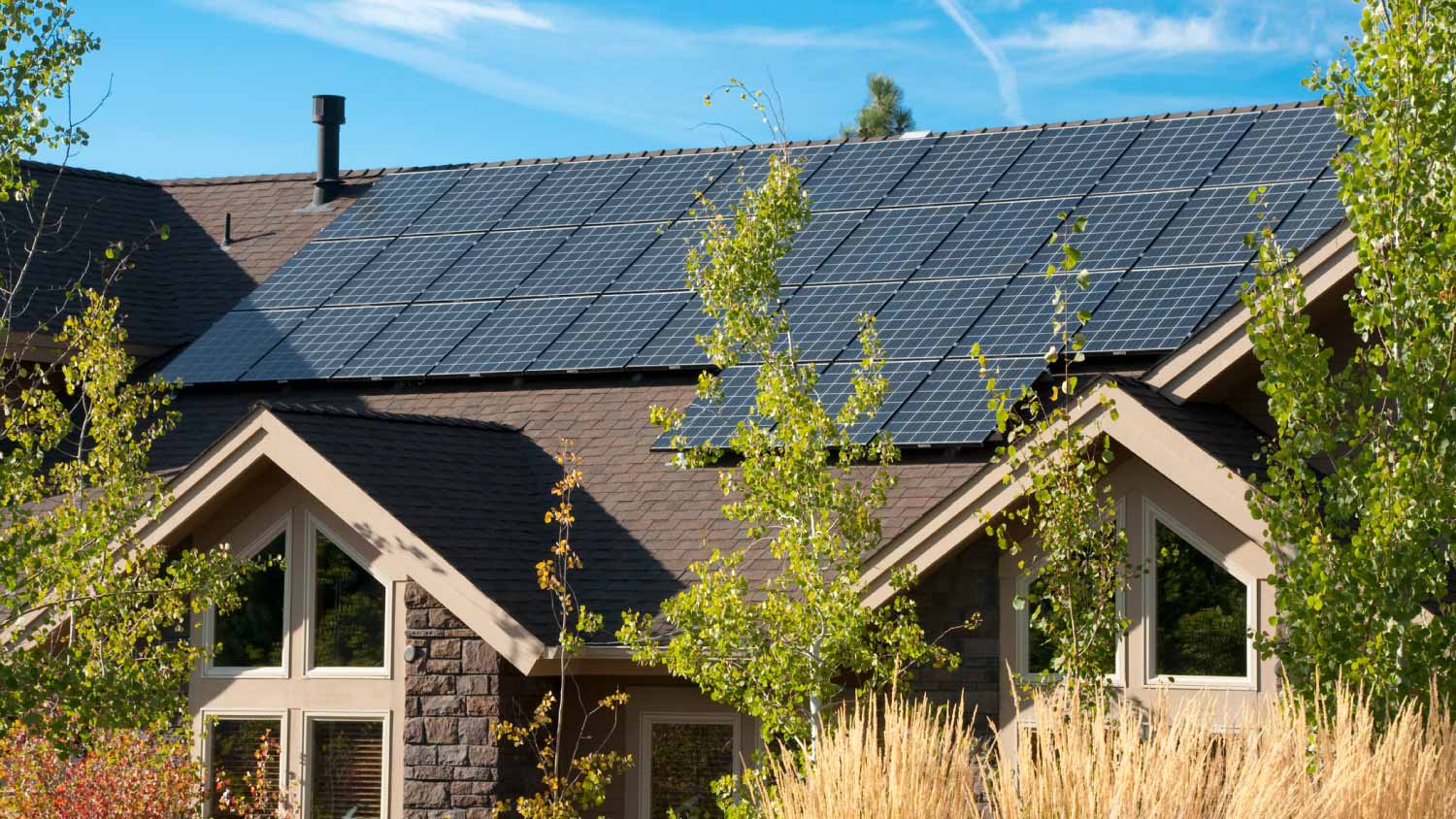
Solar battery costs depend on the size of your system, labor, and capacity. Learn how much you could pay for batteries for home solar systems.
Installing solar panels in Los Angeles, California, averages $27,010, though it ranges between $19,147 and $34,872 based on system size, panel type, wattage, and more. A solar panel installer can assess your roof and install your system.


Los Angeles home values increase by about 3.6% when you install solar panels.
There are several solar incentives and programs in California and Los Angeles to help fund your project.
Your solar installer will help you secure the necessary permits, including solar and electrical permits.
In sunny Los Angeles, solar panels are a popular option for lowering electric bills. With the 2020 mandate requiring panels on new builds, solar is becoming an integral part of being a California homeowner. Solar panel installation costs in Los Angeles range between $19,147 and $34,872, with an average of $27,010. Discover how much you can expect to pay for your home’s solar installation based on your solar system size, panel type, and more.
Here are the most important cost factors that’ll affect your solar panel installation in Los Angeles, California.
The size of the solar system will impact your solar panel installation costs. The larger the output, the more you’ll pay. Most homes need 6- to 10-kW (kilowatt) systems, which work out to anywhere from 15 to 34 panels, depending on the wattage.
The table below shows average costs based on the size of your solar system:
| Solar System Size (kW) | Average Cost |
|---|---|
| 5 | $12,575–$17,600 |
| 6 | $15,100–$21,125 |
| 7 | $17,600–$24,650 |
| 8 | $17,700–$28,175 |
| 9 | $22,625–$31,700 |
| 10 | $25,150–$35,200 |
| 11 | $27,675–$38,725 |
| 12 | $30,175–$42,250 |

When choosing the type of solar panel that works best for your home, consider three main factors: efficiency, life expectancy, and design. Here’s how the type of solar panel can affect your cost:
| Type of Solar Panel | Average Cost per Watt | Lifespan (Years) | Pros | Cons |
|---|---|---|---|---|
| Monocrystalline | $1–$1.50 | 40 | High efficiency | Most expensive |
| Polycrystalline | $0.90–$1 | 25–30 | More affordable than monocrystalline | Doesn’t work as well in high temperatures |
| Thin film | $0.70–$1 | 10–20 | Works well in high temperatures | Short lifespan |
On average, most homes need anywhere from 20 to 25 panels to fully power a home, but this can range from as few as 15 to as many as 34. How many solar panels you need depends on the number of watts per panel, your energy consumption, and the efficiency of your panels. Your average solar panel will have an output of anywhere from 250 to 400 watts. The dimensions of your solar panels will also depend on the power output.
These are additional costs you need to keep in mind for your system’s hardware. The more advanced the technology, the higher the up-front cost. The type of mount will affect the cost as well:
Fixed mounts: $10–$15 per mount
Adjustable mounts: $50 per mount
Tracking: $500–$3,000 or more per mount (these mounts can self-track sunlight, leading to up to 45% more energy production)
Other materials you will need for a solar energy system include the parts in the table below.
| Hardware | Average Cost |
|---|---|
| String inverter | $1,000–$3,000 each |
| Microinverters | $150–$300 each |
| Power optimizer | $80–$150 each |
| Solar battery | $400–$15,000 |
Inverter and microinverters: Convert direct current (DC) electricity to alternating current (AC) electricity
Optimizer: Regulates currents so each panel is more energy efficient and prevents power loss
Battery: Stores excess energy from the system so homeowners can use it at night or during a power outage
Some systems use a single solar inverter or several microinverters that convert DC to AC electricity. Materials like the wiring and battery are often grouped with the package price unless you opt for add-on services.
Hiring an experienced pro to install your solar panels is key to making the most of this exciting new home addition. Budget $0.50 per watt for labor when hiring a solar panel installer in Los Angeles, California. This number doesn’t include permits or the cost of additional technology, such as special mounts, tiles, or shingles.
Solar panel installation does require electrical work. Though many solar panel installation companies have a licensed electrician on staff who specializes in solar panels, roofing contractors sometimes subcontract an electrician. The average cost of hiring an electrician is $60 to $120 per hour.
Solar panel permits are required for installations in Los Angeles. Your solar installer will secure the required permits by submitting a solar permit application, an electrical plan, a roof plan, and other required documents. The maximum cost of the solar permit is $500. Additionally, your installer will secure an electrical permit, which costs $25 per square foot plus additional costs ranging between $6 and $111, depending on the equipment you need.
Once the installation is complete, the city will conduct an inspection before you can start using the solar panels.
A study from Zillow estimates that home value in Los Angeles increases by 3.6% when you install solar panels. Keep in mind that the California Solar Mandate from January 2020 requires all new construction homes to have solar panels (with a few exceptions), so solar will be an expected amenity moving forward.
In Los Angeles, the payback period—the amount of time it takes for you to break even on your solar panel investment—is nine years. Over a 20-year period, a homeowner will save an average of $14,225 on electricity costs, so the return on investment for solar panels is an estimated 35%.
Once your solar panels are paid off, they're officially your property. If you move, you can reinstall them on a new rooftop. Alternatively, they can increase the value of your home by 3% to 4% and attract more buyers. They can also give your property a competitive edge in a buyers’ market.
The best way to save money on the up-front costs of installing solar panels is to take advantage of the Solar Investment Tax Credit (ITC) before it ends on December 31, 2025. The ITC allows homeowners to claim a federal tax credit equal to 30% of the price of their solar panel system installation.
For example, if your solar panel system costs $30,000 before the federal tax credit, you can save around $9,000. However, to benefit from this credit, your solar system has to be installed and working before the federal incentive ends.
The ITC, also known as the Residential Clean Energy Credit, was originally extended through 2032 as part of the Inflation Reduction Act. However, new federal legislation (the Big Beautiful Bill Act) signed into law on July 4, 2025, terminated the credit early. The Solar Energy Industries Association® (SEIA) outlines the high-level policy changes and restrictions on energy tax credits.
Additionally, the extra power you choose not to store in a battery can be sent back to the grid. Your local utility company will compensate you for that power, but the amount will vary. You can check the Utility Rate Database on Open EI to estimate how much you can expect to receive for generating excess energy.
There are various state and local solar incentives available to help you take on the cost of the project.
Thanks to the net metering program, you can earn electric bill credits for solar energy that you generate but don’t use. In April 2023, the new NEM 3.0 program went into effect in California. Instead of a flat credit rate, homeowners now receive the “avoided-cost rate,” which is how much it would cost the electric company to produce the power or buy it from a power plant.
However, this means homeowners earn an average of 75% less than before. If your interconnection date was before NEM 3.0 went into effect, you’ll still get the original rate of $0.30 per kilowatt for 20 years.
Other incentives include:
Property Tax Exemption: You don’t have to pay an increased property tax rate when you install solar panels.
California Self-Generation Incentive Program: This program provides incentives for low-income residential properties for solar and energy storage systems.
Disadvantaged Communities—Single-family Solar Homes (DAC-SASH): This program offers qualifying homeowners the chance to get solar panels at no cost.
The Property Assessed Clean Energy Program: Homeowners can finance their solar panels by paying more on their annual property taxes. The downside is that the state places a lien on the home until the contract is paid off in full.
Home is the most important place on earth, which is why Angi has helped more than 150 million homeowners transform their houses into homes they adore. To help homeowners with their next project, Angi provides readers with the most accurate cost data and upholds strict editorial standards. We survey real Angi customers about their project costs to develop the pricing data you see, so you can make the best decisions for you and your home. We pair this data with research from reputable sources, including the U.S. Bureau of Labor Statistics, academic journals, market studies, and interviews with industry experts—all to ensure our prices reflect real-world projects.
Want to help us improve our cost data? Send us a recent project quote to [email protected]. Quotes and personal information will not be shared publicly.
From average costs to expert advice, get all the answers you need to get your job done.

Solar battery costs depend on the size of your system, labor, and capacity. Learn how much you could pay for batteries for home solar systems.

Get a clear estimate for solar water heater repair cost. Learn what impacts pricing and how to budget for your solar water heater repair.

Get a detailed estimate of solar farm costs. Learn about average prices, key cost factors, and ways to save when planning your solar farm project.

Do solar panels work in the winter? Yes, solar panels can work throughout every season, creating green energy even as low temperatures and snowfall persist.

What is solar farming? Learn how solar farms work, types, pros and cons, and how this renewable energy boom can help you turn daylight into power.

What happens to solar power when the batteries are full? We’re here to answer that question and give you tips on what to do with the excess.